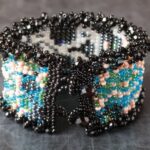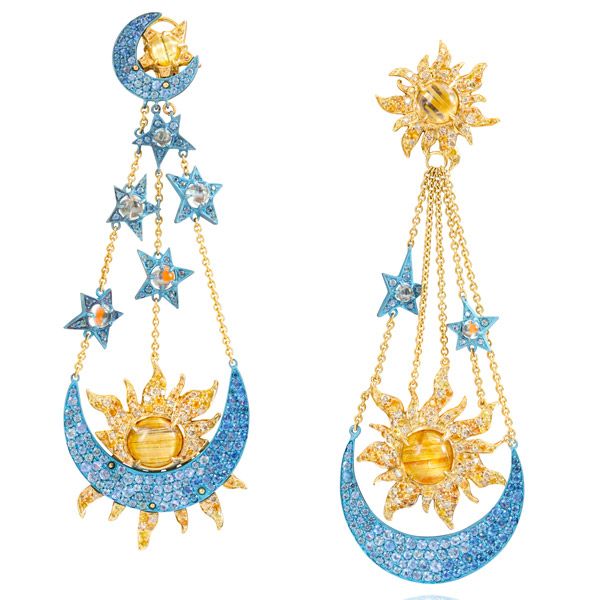Are you wondering how to detangle fine jewelry without causing damage? Proper care and maintenance of your precious pieces are essential to ensure their longevity and beauty. This article will provide you with the necessary knowledge and techniques to effectively detangle your jewelry without causing any harm.
It is important to understand the different methods for detangling various types of fine jewelry, including gold, silver, and gemstone pieces. Additionally, knowing the tools and materials needed for this task, such as gentle cleaning solutions and soft bristle brushes, is crucial in preventing any damage to your jewelry during the detangling process.
In the following sections, we will provide you with a step-by-step guide on how to safely detangle necklaces, bracelets, earrings, and delicate chains. We will also share tips on avoiding common mistakes that can lead to further tangling and damage. Finally, we will discuss proper storage and care tips to prevent tangling in the future. By following these guidelines, you can ensure that your fine jewelry remains untangled and beautiful for years to come.
Identifying the Type of Fine Jewelry
Fine jewelry comes in a variety of materials, including gold, silver, and gemstones, each requiring different methods for detangling. Knowing the appropriate detangling techniques for specific types of fine jewelry is essential to prevent damage and maintain their beauty.
When dealing with gold jewelry, it is important to use gentle cleaning solutions and soft bristle brushes to carefully detangle any knots or tangles. Gold is a delicate metal and using harsh chemicals or abrasive materials can cause damage to the jewelry. For silver jewelry, it is best to use a polishing cloth to gently untangle any knots. Silver is prone to tarnishing, so it’s important to handle it carefully and avoid using harsh chemicals that can accelerate tarnishing.
Gemstone jewelry requires special care when detangling, as the stones can be fragile and easily damaged. It’s crucial to use a soft brush and mild cleaning solution specifically designed for gemstones. Additionally, some gemstones may have specific care requirements, so it’s important to research the appropriate methods for detangling jewelry featuring certain gemstones.
By understanding the different methods for detangling gold, silver, and gemstone jewelry, you can ensure that your fine jewelry remains in pristine condition without causing any damage during the detangling process. Taking the time to properly identify the type of fine jewelry you have and using the correct tools and techniques will help you maintain the longevity and beauty of your cherished pieces.
Tools and Materials Needed for Detangling Fine Jewelry
When it comes to detangling fine jewelry, having the right tools and materials is essential for ensuring that the pieces are carefully and effectively untangled without causing any damage. Using the wrong cleaning solutions or abrasive brushes can result in scratches, discoloration, or other forms of harm to your precious jewelry. Here are some key tools and materials you will need for safely detangling your fine jewelry:
Gentle Cleaning Solutions
Using mild and gentle cleaning solutions is crucial for preserving the integrity of your fine jewelry. Avoid harsh chemicals or cleaners that can cause damage to metals and gemstones. Instead, opt for specialized jewelry cleaning solutions that are designed specifically for delicate pieces. These solutions are formulated to effectively remove dirt and grime without compromising the quality of your jewelry.
Soft Bristle Brushes
Soft bristle brushes are essential for gently detangling and cleaning fine jewelry. Look for brushes with ultra-soft bristles that won’t scratch or damage the surface of your jewelry. Small, soft-bristled brushes are ideal for reaching into intricate designs and delicate chains without causing any harm.
Microfiber Cloth
A microfiber cloth is a must-have tool for polishing and shining your detangled fine jewelry after the cleaning process. This type of cloth is gentle on metal surfaces and will help remove any remaining residue from the cleaning solution without leaving behind lint or scratches.
By using these gentle cleaning solutions, soft bristle brushes, and a microfiber cloth, you can effectively detangle and care for your fine jewelry without causing any damage. Taking the time to properly equip yourself with these tools will ensure that your precious pieces remain beautiful and lustrous for years to come.
Step-by-Step Guide on How to Detangle Necklaces and Bracelets Without Causing Damage
Fine jewelry, such as necklaces and bracelets, are prone to tangling due to their delicate nature. Learning how to detangle fine jewelry without causing damage is essential for maintaining its quality and longevity. Follow these step-by-step guidelines to effectively detangle your necklaces and bracelets:
1. Lay the jewelry flat: Start by laying the tangled necklace or bracelet on a flat surface to get a better view of the knots and tangles. This will also prevent further tangling while you work on detangling the piece.
2. Apply gentle pressure: Gently apply pressure to the knot or tangle with your fingers to loosen it without pulling too hard. Patience is key in this process, as forcing the tangles can lead to breakage or damage.
3. Use a straight pin or needle: For more intricate tangles, use a straight pin or needle to carefully manipulate and untangle the knots. Insert the pin into the center of the knot and gently wiggle it back and forth to loosen the tangled areas.
4. Apply a small amount of oil: If the tangles seem stubborn, apply a small amount of oil, such as baby oil or olive oil, to help lubricate the knots and make them easier to untangle.
5. Use a fine-toothed comb or toothpick: For chains or links that are still knotted after using your fingers and pins, gently use a fine-toothed comb or toothpick to carefully separate each individual link until the entire piece is untangled.
By following these step-by-step guidelines, you can safely detangle your necklaces and bracelets without causing damage, preserving their beauty for years to come.
| Detangling Method | Materials Needed |
|---|---|
| Fingers & Pins | Flat surface, straight pin/needle |
| Oil Lubrication | Baby oil or olive oil |
| Fine-Toothed Comb/Toothpick | Gentle cleaning solution (optional) |
Tips for Untangling Delicate Chains and Intricate Jewelry Designs
Untangling delicate chains and intricate jewelry designs can be a daunting task, but with the right techniques and tools, it can be done effectively without causing damage to the pieces. When dealing with fine jewelry that has intricate designs or delicate chains, it’s important to approach the detangling process with care and patience.
One effective method for untangling delicate chains is to use a straight pin or needle. Gently insert the pin into the tangle and carefully work it through to loosen the knots. Avoid pulling or forcing the chain, as this can cause damage. For jewelry with intricate designs, such as pendants or charms, it’s best to use a pair of tweezers to carefully separate any tangled elements.
Another helpful tip for untangling delicate chains and intricate jewelry designs is to use a lubricant, such as mineral oil or baby oil. Apply a small amount of oil onto the tangled area and gently work through the knots with your fingers or a soft brush. The lubricant will help loosen the tangles without causing friction that could lead to damage.
It’s also important to keep in mind that prevention is key when it comes to dealing with delicate and intricate jewelry. Store these pieces in separate compartments within your jewelry box or use individual pouches to prevent tangling. Additionally, be mindful of how you handle and store these pieces to minimize the likelihood of them becoming tangled in the first place.
How to Safely Detangle Earrings and Prevent Damage to Studs and Hooks
When it comes to detangling earrings, especially those with intricate designs or delicate components, it’s important to take extra care to avoid causing damage. Whether you’re dealing with stud earrings, hoop earrings, or dangly designs, here are some tips to safely detangle your earrings without risking any harm.
Use a Gentle Touch and Patience
One of the most important steps in detangling earrings is utilizing a gentle touch and exercising patience. Rushing through the process can lead to further entanglement or even breakage. Start by carefully examining the tangled areas and identifying any potential pressure points or weak spots in the design.
Utilize Tools and Solutions
In some cases, using tools like a fine needle or straight pin can help manipulate the knots in your earring chains without causing damage. Additionally, applying a small amount of gentle cleaning solution can help lubricate the tangled areas and make it easier to separate the pieces.
Consider Professional Help
For particularly stubborn tangles or intricate designs that you’re hesitant to manipulate on your own, consider seeking professional help. A jeweler with experience in untangling delicate jewelry can provide guidance on how best to approach the situation without causing harm to your earrings.
By taking these steps into consideration, you can safely detangle your earrings and prevent damage to studs and hooks. Remember that regular maintenance and proper storage play a crucial role in preventing future tangling issues, so take the time to care for your fine jewelry properly.
Common Mistakes to Avoid When Detangling Fine Jewelry
When it comes to detangling fine jewelry, it’s important to avoid common mistakes that can lead to further tangling and potential damage to your precious pieces. Here are some mistakes to avoid when trying to detangle your fine jewelry:
- Using force: Pulling or tugging at tangled jewelry can cause the chains to twist even more or potentially break, especially delicate chains and intricate designs.
- Not using the right tools: Using regular brushes or sharp objects to detangle jewelry can scratch the surface of gold, silver, or gemstones. It’s important to use soft bristle brushes or specialized jewelry cleaning tools.
- Using harsh chemical solutions: Harsh cleaning solutions can damage the metal or stones in your fine jewelry. It’s best to use gentle cleaning solutions specifically formulated for jewelry cleaning.
In order to prevent further tangling and potential damage, it’s crucial to approach the detangling process with patience and care.
Avoid twisting or pulling on the jewelry forcefully, as this can lead to knots becoming tighter and more difficult to undo. Instead, take your time and gently work through each knot using the appropriate tools and methods.
Lastly, avoid storing your jewelry in a haphazard manner that could lead to tangling in the first place. Properly organizing and storing your fine jewelry can help prevent future detangling headaches.
By being mindful of these common mistakes, you can ensure that you properly detangle your fine jewelry without causing further damage.
Proper Storage and Care Tips to Prevent Tangling in the Future
Properly storing your fine jewelry is essential in preventing tangling and damage. One of the most effective ways to store necklaces, bracelets, and earrings is by using individual cloth pouches or soft-lined jewelry boxes. This helps to prevent pieces from rubbing together and tangling. Additionally, using a jewelry organizer with compartments can also keep different pieces separated and prevent tangling.
Another important aspect of preventing tangling in the future is to ensure that your jewelry is clean before storage. Residual oils, lotions, and sweat can contribute to tangling and tarnishing, so it’s crucial to gently clean your jewelry with a soft bristle brush and mild cleaning solution before storing them. This not only keeps your pieces looking beautiful but also reduces the likelihood of them becoming tangled.
Furthermore, when it comes to fine chains and delicate designs, consider investing in necklace holders or hooks that allow you to hang individual pieces. Hanging necklaces vertically prevents them from getting tangled with other chains or pendants. For earrings, using a specialized earring holder or keeping them in separate compartments can prevent studs from getting entangled with hook earrings or other accessories.
| Storage Method | Preventive Measures |
|---|---|
| Cloth Pouches or Jewelry Boxes | Prevents rubbing together and tangling |
| Jewelry Organizer with Compartments | Keeps different pieces separated |
Conclusion
In conclusion, it is crucial to prioritize the proper care and maintenance of fine jewelry in order to ensure its longevity and beauty. Understanding the different methods for detangling gold, silver, and gemstone jewelry is essential in preventing damage during the detangling process. By using the right tools and materials such as soft bristle brushes and gentle cleaning solutions, individuals can effectively detangle their jewelry without causing harm.
Furthermore, it’s important to follow a step-by-step guide on how to detangle necklaces and bracelets without risking damage. Delicate chains and intricate designs require special attention when untangling, and it’s important to utilize tips specifically tailored for these types of jewelry. Additionally, safely detangling earrings can prevent damage to studs and hooks, preserving the overall quality of the jewelry pieces.
In order to prevent further tangling and damage, individuals should avoid common mistakes when detangling fine jewelry. Proper storage techniques can also play a crucial role in preventing tangling in the future. By taking these measures into consideration and making regular maintenance a priority, individuals can ensure that their fine jewelry maintains its beauty for years to come. Understanding how to detangle fine jewelry and implementing proper care techniques will ultimately contribute to the preservation of these valuable pieces.
Frequently Asked Questions
How Do You Untangle Thin Jewelry?
Untangling thin jewelry can be a delicate process. One method is to use a thin needle or pin to carefully maneuver through the knots and loosen them without causing any damage. Another approach is to gently pull on the ends of the jewelry in opposite directions, allowing the knots to loosen gradually.
How Do You Get Knots Out of Fine Jewelry?
Getting knots out of fine jewelry requires patience and precision. One technique is to use a small amount of lubricant, such as oil or lotion, to help untangle the knots more easily. Alternatively, using two sewing needles to pry apart the tangled sections can also be effective in removing knots from fine jewelry without causing any damage.
How Do You Keep Fine Necklaces From Tangling?
To keep fine necklaces from tangling, it’s important to store them properly. One way to do this is by hanging each necklace individually on a jewelry stand or hook, preventing them from intertwining with one another.
Another method is to store them in separate compartments within a jewelry box or organizer, keeping each necklace tangle-free and easy to access when needed. Regularly checking and organizing the necklaces can also prevent tangling in the long term.

Welcome to my jewelry blog! My name is Sarah and I am the owner of this blog.
I love making jewelry and sharing my creations with others.
So whether you’re someone who loves wearing jewelry yourself or simply enjoys learning about it, be sure to check out my blog for insightful posts on everything related to this exciting topic!





